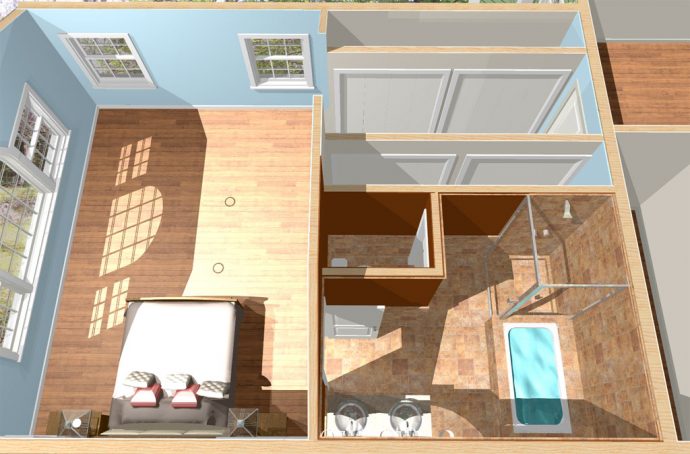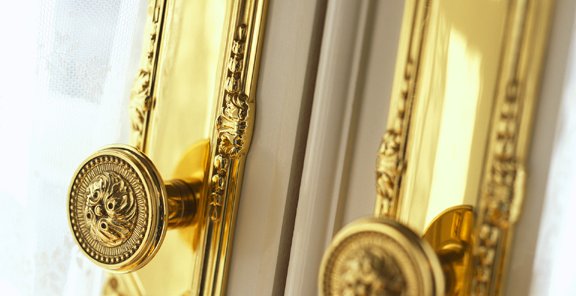
Second Story Stucco Work for Home Remodeling
Deciding to stucco your two-story home is really two processes in one project: stucco and scaffolding. In order to accomplish one, you need to know how to use the other. If you choose to use an extension ladder, you run the risk of not only having the inconsistent footing to stabilize it on but going up and down an extension ladder all day just to move it a few feet each time and add hours or even days to a project.
source: link
Before you begin, you need to choose a scaffolding tower instead. Choose one that will accommodate a two-story home. A rolling scaffold tower comes in a package that will include the following:
A choice of an 8, 14, or 20 ft adjustable height
• Scaffold frames
• Cross braces
• Locking casters
• Outside and Inside Handrails
• Hook-on Scaffolding Decks
• Guard Rails
• Other assorted material for assembly configurations
Scaffolding tubes are connected to the individual scaffold frames that are in laddered sections. A typical two-story scaffolding will give you four to six sections to use. End brackets will hook and then bolt to the scaffolding frame as you go along. The sections can be reconfigured to meet your needs as you move along the perimeter of your home to adjust to any obstacles that may be in your way like awnings or porch roofs.
You can choose from a variety of scaffold towers at http://www.scaffoldstore.com/Scaffold-Stair-Tower-p/20rst.htm
Keep in mind the safety issues involved with using scaffolding. Read the instructions carefully before attempting to assemble and then use a scaffold tower. You may even want to have a professional contractor or salesperson show you the following:
• How to properly stabilize scaffolding
• The erecting and dismantling process
• How to inspect scaffolding using OSHA guidelines/checklist
• How to safely move it
Proper stability of scaffolds involves the following:
• The unit is on a level and firm ground.
• All the casters have been locked in place
• An outrigger is used for additional stabilization (consult your instruction manual for this additional item)
• That you have not erected the tower more than what is recommended by the manufacturer of the tower
Towers should never be used in inclement weather. This would include strong winds of 30 mph or more. For added safety, the scaffold tower should be brought down several feet when it is being moved. And as you move it, only push it from the base area.
Stucco – Step by Step
What is Stucco?
Stucco is made up of a mix of several types of concrete that is layered. It sets and if done correctly, should adhere to the surface wall that it is being applied on. Stucco has several benefits including it is a cost-effective aesthetic alternative to siding or brick, it is resistant to earthquakes, and it works well in climates that have a very high level of humidity. Typically, stucco is usually applied to wood, steel, or some form of a solid wall material other than concrete.
Before beginning the process, make sure that the temperature outside will not fall below 40 Fahrenheit throughout the process or go above 90 Fahrenheit. Both extreme temperatures will adversely affect the curing process of the stucco to adhere properly to the surface wall. Also, check your local city for any code requirements before beginning the application of stucco to your home.
Steps:
1. Install sheathing material. These are boards that will create a surface to apply the stucco on. Apply a plywood of 3/8” thickness is usually the standard. These must be spaced per wall studs of approximately every 16 inches.
2. Once the plywood is in place, cover it with at least two layers of waterproof building paper. An asphalt felt material will work for this. Avoid a plastic wrap. Stucco will not adhere to plastic. But, it is usually a good idea to put a plastic drainage mat between the two layers of asphalt felt in order to avoid any occurrence of rotting in the wall which will begin to occur very quickly after you complete the stucco if the mat is not installed.
3. Take weep screeds which are used at the foundation of the home’s walls and install them there. They will act as a vent for moisture to escape from and should be put right above the foundation.
4. Take casing beads which also act to deter moisture, and install these around the corners of all the doors and windows. DO NOT SUBSTITUTE WEEP SCREEDS IN PLACE OF CASING BEADS.
5. Begin to attach the metal lath to the wall surface. This is the framework for the stucco. The smaller gauge wire that is used, the more durable the wire. For stucco, a 17 gauge wire is recommended. Then, nail or staple the metal lath to the studs and not the actual sheathing. This should be at least 7 inches apart. Make sure that when you get to the corners, the metal lath is overlapped by at least ½” at each side and at least one full inch at the very end.
6. For the purpose of controlling cracking, install control joints by sectioning the wall into rectangles. Each rectangular panel should not exceed 144 feet. These are vertically set and filled with mortar.
Three Coat Layering:
Scratch coat:
• Create 1 part cement and 2-4 parts plaster sand
• Add enough potable water to allow for troweling.
• Using a square trowel, begin to apply, apply the mixture at a 45-degree angle, pushing it gently into the metal lath. The thickness should be approximately 3/8 of an inch.
• For bonding purposes, score this coat thoroughly
• Allow it to cure for at least 48 hours
• Apply a mist twice each day. This allows for proper curing without cracking. Do not do this in humidity about 70%.
Brown coat:
• Create 1 part cement to 3-5 parts plaster sand
• Use the same process of application as the scratch coat to a total thickness of ¾ of an inch. When this layer loses its sheen, smooth it out.
• This layer needs at least seven days to cure
• Apply a mist twice each day for seven days
Finish coat:
• Choose your finish coat. See the varieties at http://thestuccoguy.com/stucco-textures-a-visual-aid/
• Mix 1 part cement to 1-3 parts plaster sand.
• Apply the same as the brown coat but with the texture of our choice
• View the appearance as you go along from at least 30 ft. away for the full effect.
From the variety of finish coats to choose from, you can pick on that has a color already in it, or keep the finish without color included and then paint over it after it is fully dried. A week or two is best to wait before you begin to paint.
For maintenance of your stucco, you can read more at /www.thisoldhouse.com/how-to/how-to-repair-stucco
Jessica Kane is a professional blogger who writes for Scaffold Store, the favorite and trusted scaffold supplier of the largest contractors.




